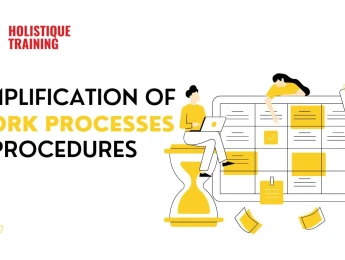Managing risks within your businesses is a monstrous task. You need to review each function and operational change to ensure you aren’t putting extra strain on your processes or profits.
One of the biggest areas of risk in every company is managing finances. Treasury risk management means gaining an understanding of the whole business, where profits and losses are made, and how to use financial tools to maximize money.
It’s also important to study trends and predict future potential downturns to develop workable recovery solutions in times of greater financial risk. Treasury tools and techniques should be combined with the best financial technology to help determine solutions to cash flow shortages and create beneficial relationships with partners to aid financial recovery and success.
Treasury experts should also consider the financial products they use to aid forecasting and establish risk management solutions through liability management, inventory management, and trading simulation. For companies with a global reach, exchange rates, currencies, and tax rates must also be considered changeable processes that could pose a financial risk.
Upon completion of this course, participants will be able to:
- Manage liquidity and working capital.
- Understand your cash flow in relation to your operation.
- Highlight financial risks and place them in risk management and contingency procedures.
- Reduce financial costs for the business using a cost-benefit analysis.
- Recommend appropriate recovery methods in times of financial hardship.
- Evaluate your capital investment opportunities and build beneficial working relationships.
- Implement a risk management strategy with the aim of continuous improvement.
- Understand hedging and make sound risk management decisions.
This course is designed for anyone who highlights financial risks and creates strategic prevention measures within an operation. It would be most beneficial for:
- Business Owners
- Treasurers
- Operations Managers
- Chief Financial Officers
- Finance Professionals
- Financial Decision-makers
- Risk Assessors
- IT Professionals
This course uses various adult learning methods to aid full understanding and comprehension. Participants will view videos and presentations to discover the best treasury processes and procedures financially successful companies use and learn about common risk areas.
They will have the most up-to-date technology tools to make financial decisions and predict future trends using forecasting methodology and reporting. They will also work in groups to discover the most efficient cost-saving procedures to be implemented in their own companies.
Day 5 of each course is reserved for a Q&A session, which may occur off-site. For 10-day courses, this also applies to day 10
Section 1: What Does Treasury Risk Management Mean?
- The role of a treasurer.
- Identifying risks and how this can help the wider company.
- The use of treasury products to aid financial change.
- Currency risk management and external factors.
- Treasury solutions and assessments.
- Corporate treasury risk management.
- Commodity hedging and what this means.
- Trading simulations and practical implementation.
Section 2: Financial Risk Management Tools & Technologies
- StoraEnso meetings.
- Hedging and how it can benefit you.
- Strategic implementation of treasury products.
- Treasury performance management and record-keeping.
- The benefits of treasury management.
- Treasury evaluation and change implementation.
- Interest rates for hedging and trading simulations.
Section 3: Predictions & Accurate Forecasting
- Your roles and responsibilities in forecasting.
- Cash surpluses and how to invest.
- Maximising your return on investment and proving your worth.
- Cash calls and cash shortages - the short-term solutions.
- Determining the right level of capital management.
- Group and global cash management.
- Budgeting processes and control procedures.
- Contingency and recovery strategies.
Section 4: Interest Rates, Taxes & Exchange Rates
- Managing your interest and re-investing.
- Risk management procedures regarding interest.
- Corporate asset management.
- Investment decision-making and interest.
- Liability management processes and agreements.
- Currency hedging and trading with exchange rates.
- Tax implications, laws, and your responsibility as an investor.
Section 5: Long-term Financial Structures & Managing Change
- Long-term financing strategies in the capital market.
- Medium equity solutions for financing.
- Capital markets and debt management.
- Liquidity risk management and documentation.
- Technological resourcing and risk influencing.
- Asset and liability management.
- Understanding positive and negative debt.
- Continuous financial strategy improvement and change.
Upon successful completion of this training course, delegates will be awarded a Holistique Training Certificate of Completion. For those who attend and complete the online training course, a Holistique Training e-Certificate will be provided.
Holistique Training Certificates are accredited by the British Assessment Council (BAC) and The CPD Certification Service (CPD), and are certified under ISO 9001, ISO 21001, and ISO 29993 standards.
CPD credits for this course are granted by our Certificates and will be reflected on the Holistique Training Certificate of Completion. In accordance with the standards of The CPD Certification Service, one CPD credit is awarded per hour of course attendance. A maximum of 50 CPD credits can be claimed for any single course we currently offer.
- Course Code PF1-114
- Course Format Classroom, Online,
- Duration 5 days














